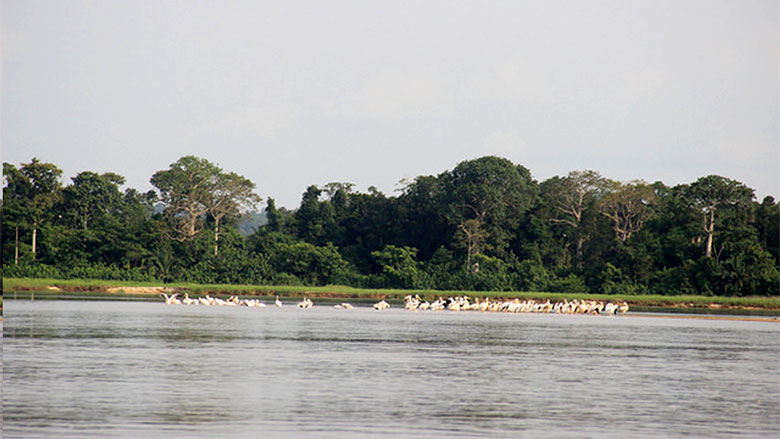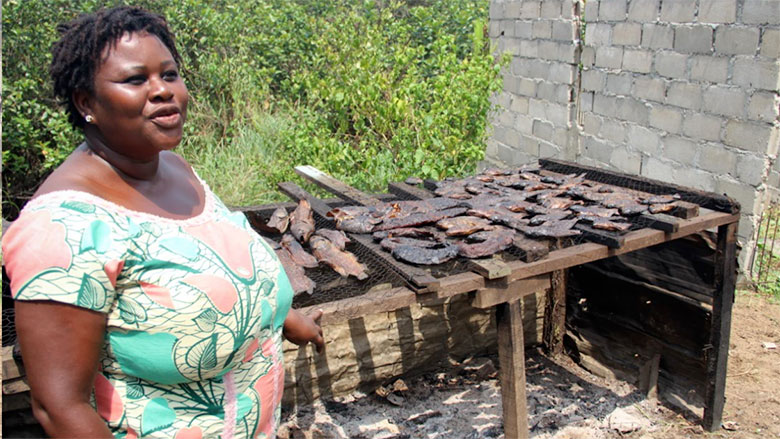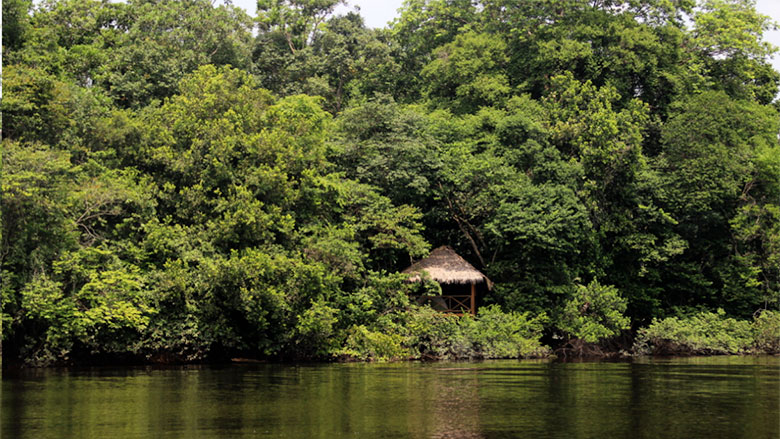In a bid to strengthen biodiversity protection in these wetlands and, most importantly, institute sustainable management measures for these ecosystems by working with the local and neighboring populations, the Government implemented the Sustainable Management of Critical Wetlands Ecosystems Project (PAZH) in several priority sites such as Bas Ogooué.
Many persons in Lambaréné, such as Marilou Ossawa, were directly impacted by the establishment of standards aimed at eco-responsible fishing through the restriction of zones and fishing techniques. Marilou, age 41, is the President of the Inongouna Association, a group of marieuses or smoked fish vendors. Fishing is therefore their main source of income. “We suddenly could no longer use monofilament nets or the other village techniques to fish. We couldn’t even go to certain areas. Furthermore, we were told that in the long run, our practices would wipe out the fish. And if the fish were to disappear tomorrow, what would we sell?” she says.
Collective awareness …
She therefore agreed to change her practices. It was not easy at first, but it has now paid off. “Not only do I understand the importance of eco-responsible fishing, but I am also participating in the preservation of the natural resources of my region,” explains a delighted Marilou. “Also, because of the new fishing techniques, I have been able to increase my income as well as the income of the other members of the Inongouna Association. The fish we are catching are now bigger and therefore sell better at CFAF 3,000 per kilo, compared to CFAF 300 in the dry season.”
To encourage such initiatives, the PAZH has provided financing and grants to the Inongouna Association and other associations in the region to introduce income-generating activities (IGAs). Through the establishment of these IGAs, the project seeks to take into account the needs of the neighboring populations and to reduce the effects of certain restrictions imposed to preserve the natural resources. It helps them identify and explore other sources of income in order to ease the pressure on the environment.
… and the diversification of economic activity
Several types of IGAs are therefore being established and financed by the project. Some in the fisheries sector, as is the case with Marilou, are financing fish farming, the processing and conservation of fisheries products, or even the maintenance and repair of pirogue engines, for example. Others involve the tourism, agricultural, and livestock sectors. By taking advantage of an outstanding site and tourism potential that has not yet been fully tapped, good times are in store for Bas-Ogooué. Coupled with the promotion of local crafts or even retail sales, entire villages could be revitalized through the influx of national and international tourists, as well as the sale of local products.



